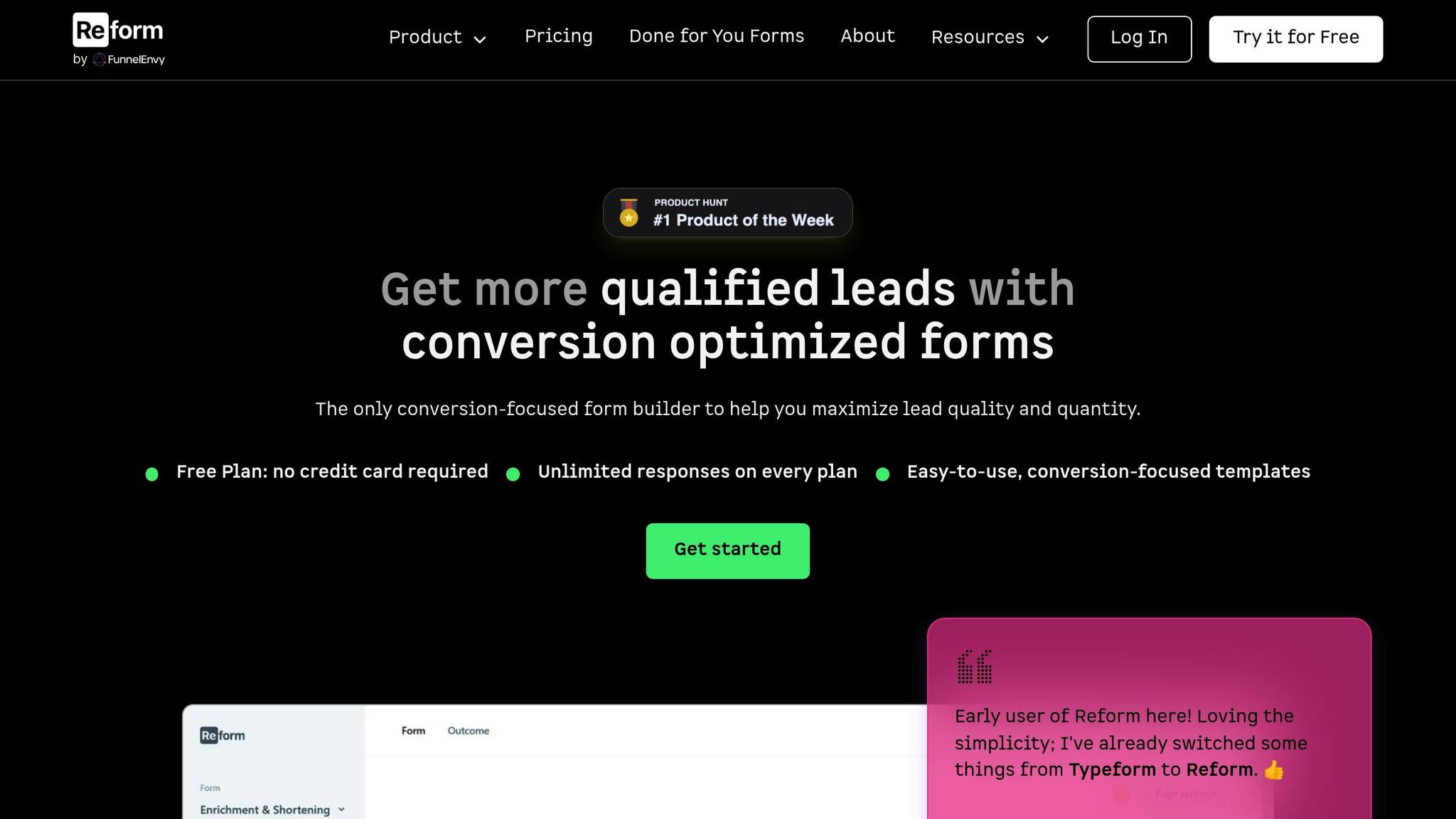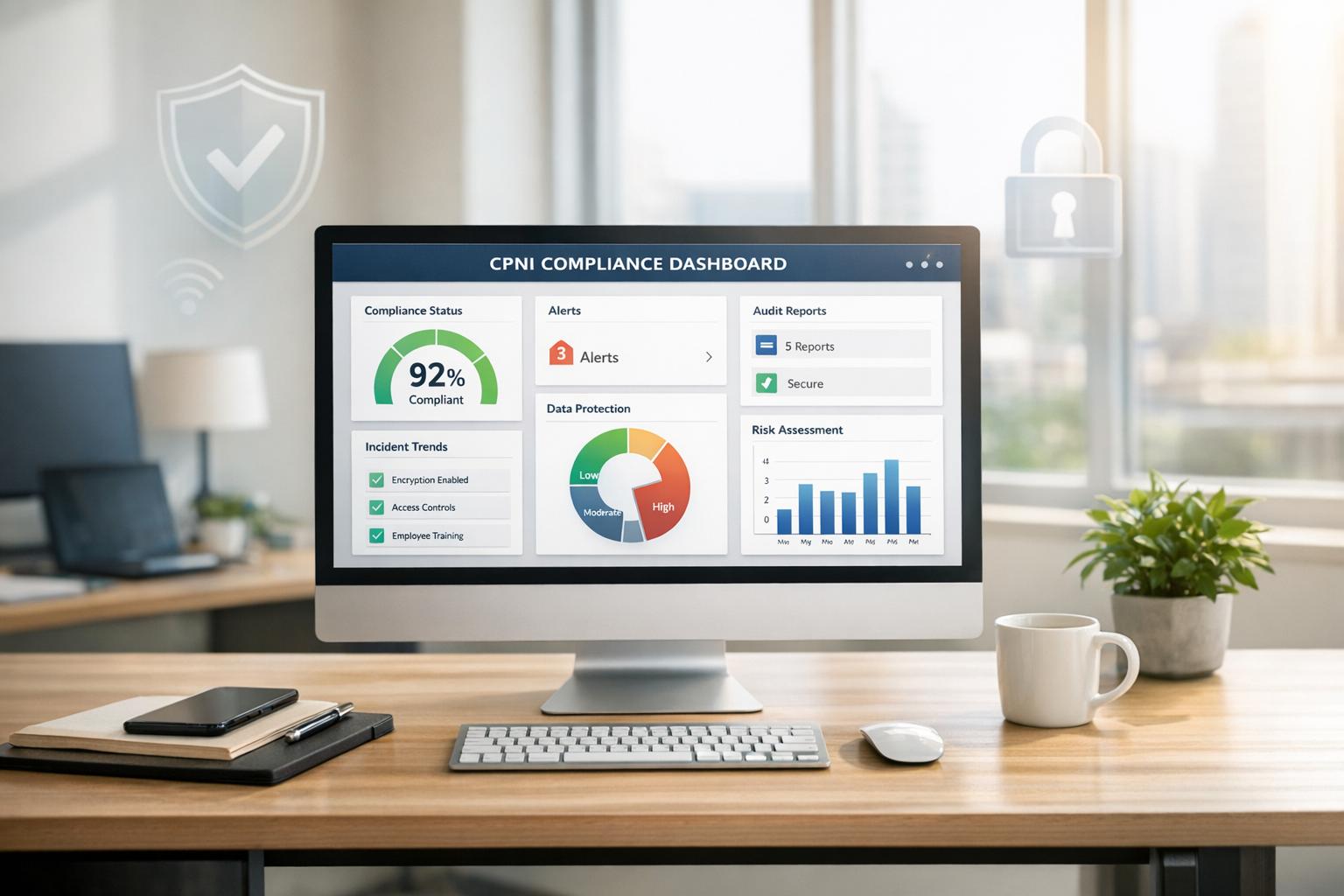How to Implement SCCs for Cross-Border Data Transfers

When transferring personal data from the EU to countries outside the EEA, Standard Contractual Clauses (SCCs) are essential for staying compliant with GDPR. SCCs are pre-approved legal terms that ensure data protection standards are upheld during international transfers, especially when the destination country lacks an adequacy decision.
Here’s the process in a nutshell:
- Map Data Transfers: Audit all instances of international data movement, identifying data types, transfer purposes, and roles (controller or processor).
- Conduct Transfer Impact Assessments (TIAs): Evaluate the data protection laws in the destination country and document risks.
- Select SCC Modules: Choose the correct module (Controller-to-Controller, Controller-to-Processor, etc.) based on your data transfer relationships.
- Update Contracts: Revise agreements to incorporate SCCs, ensuring annexes are completed with accurate details.
- Implement Safeguards: Apply encryption, access controls, or other measures if TIAs reveal additional risks.
- Maintain Compliance: Regularly review and update SCCs, monitor regulations, and train staff.
Failing to comply can result in penalties of up to $24 million or 4% of global revenue. SCCs not only protect your business legally but also help build trust with customers and partners.
Let’s break this process down step by step.
Standard Contractual Clauses (SCC) - What Are They? - Data Transfers
Preparing for SCC Implementation
Getting ready for SCC implementation is a critical step to ensure compliance and avoid unnecessary expenses. This phase lays the groundwork for your entire compliance strategy and helps sidestep costly errors. According to a 2023 survey by TrustArc, over 60% of organizations transferring data outside the EEA had to update or renegotiate contracts to align with new SCC requirements.
Preparation involves thorough documentation, legal analysis, and strategic planning. Start by mapping out every instance of cross-border data movement.
Mapping International Data Transfers
Mapping data flows is the cornerstone of SCC implementation. It's essential to pinpoint every instance where personal data crosses international borders, document all parties involved, and understand the legal relationships in play.
Conduct a comprehensive audit of all data transfers. Create a catalog that includes the data types (like customer names, email addresses, or payment details), the destination countries, and the purpose for each transfer. For each case, identify whether your role is that of a data controller or processor, and do the same for the receiving party.
For instance, a US-based SaaS company might need to map transfers to cloud hosting providers, third-party analytics tools, customer support platforms, or international subsidiaries.
Be especially mindful of indirect transfers, as these are often overlooked. Examples include data processed by subprocessors, backups stored internationally, or support staff accessing data from other countries. Many organizations only uncover these hidden transfers during regulatory inspections.
The outcome of this process should be a detailed inventory that tracks the complete journey of personal data within your systems. This inventory serves as a roadmap to identify which transfers need SCCs and which specific SCC modules apply. Once your data flow map is complete, move on to auditing and updating existing vendor agreements.
Reviewing and Updating Agreements
After mapping your data flows, the next step is to review and update all contracts with third-party vendors, partners, and subsidiaries. Your current Data Processing Agreements (DPAs) likely require significant revisions to align with SCC standards.
Start by examining each contract to identify clauses that may conflict with SCC requirements. Watch for outdated privacy terms, insufficient breach notification protocols, or missing provisions for data subject rights. All contracts must reference the latest SCC modules and include fully completed annexes with accurate details about each data transfer.
Simply appending SCCs to existing agreements isn’t enough. You need to ensure that the roles and responsibilities of all parties are clearly defined and that every required detail is documented. The SCC annexes should include contact information for all parties, descriptions of the types of data being transferred, and a clear outline of the technical and organizational safeguards in place.
As of December 27, 2022, organizations were required to transition to the updated SCCs for all relevant agreements, replacing older versions. If your agreements haven’t been updated since then, this review becomes even more urgent.
Additionally, any supplementary measures identified during your Transfer Impact Assessments must be incorporated into your updated agreements. The goal is to establish a comprehensive contractual framework that fully addresses the nuances of your international data transfers.
Consulting Legal Experts
Legal expertise is invaluable during SCC preparation. International data protection laws are complex, and legal professionals can help interpret the requirements specific to your business while ensuring your approach meets regulatory standards.
Engage legal experts to confirm SCC adequacy for the jurisdictions involved and draft any necessary supplementary measures. They can identify potential conflicts between local laws and SCC obligations, ensuring that your contracts remain enforceable under relevant national laws.
If your data transfers involve sensitive sectors like healthcare or financial services, consider hiring legal counsel experienced in both US and European data protection laws. These industries often have additional compliance layers that must align with SCC requirements.
While investing in legal support may seem costly upfront, it often prevents significant expenses and complications later on. Proper legal guidance ensures your SCC implementation is solid and minimizes the risk of compliance failures. These preparation steps build on the regulatory framework discussed earlier, setting the stage for a reliable and effective SCC implementation.
Step-by-Step Guide to Implementing SCCs
Once you're prepared, the next step is to implement Standard Contractual Clauses (SCCs) methodically. This involves meeting legal requirements, keeping documentation in order, and making well-informed decisions. The modular format of the 2021 SCCs allows you to pick and apply only the clauses that fit your specific data transfer scenario.
Conducting a Transfer Impact Assessment (TIA)
The first step is conducting a Transfer Impact Assessment (TIA). Start by identifying and mapping each data transfer, detailing where the data originates and where it will go. List the types of data being transferred, their purpose, and the legal grounds for the transfer.
Next, evaluate the data protection laws in the destination country. This includes reviewing local privacy regulations, government access to data, surveillance practices, and whether the SCCs can be enforced effectively. Document all potential risks, such as conflicts between local laws and SCC obligations, the ability of individuals to exercise their rights, or government powers that could undermine SCC protections.
After assessing these risks, decide whether SCCs alone are sufficient or if additional safeguards like encryption or pseudonymization are necessary. Keep a detailed record of your TIA findings to ensure transparency.
Once this step is complete, you can move on to selecting the appropriate SCC module.
Selecting and Completing SCC Modules
Choosing the right SCC module depends on the roles of the parties involved in the data transfer. There are four modules to choose from: Controller-to-Controller, Controller-to-Processor, Processor-to-Processor, and Processor-to-Controller. Determine whether your organization acts as a data controller or processor, and do the same for the receiving party. This will guide your module selection.
After selecting the correct module, complete the annexes accurately. These annexes are essential for ensuring compliance and transparency:
- Annex I.A: Include the legal names, addresses, and contact details of all parties involved, specifically for data protection matters.
- Annex I.B: Provide a detailed description of the data categories being transferred, the purposes for processing, and the transfer specifics.
- Annex I.C: Identify the supervisory authority responsible for overseeing compliance.
- Annex II: Clearly outline the technical and organizational measures in place to secure the data.
Filling out these annexes with precision ensures legal clarity and regulatory compliance.
Adding SCCs to Contracts
Once you've completed the SCC modules, the next step is to integrate them into your contracts. SCCs should be included in your Data Processing Agreements or service contracts. Make sure all parties sign the SCCs to formalize their contractual obligations.
Clearly specify which SCC modules and annexes are included. Decide whether signatures will be electronic or physical, depending on the governing national law. Define the roles and responsibilities of each party, such as who will handle data subject requests, manage security incidents, and maintain compliance documentation. Include provisions for regular compliance reviews and procedures to handle conflicts between local laws and SCC obligations.
If your TIA revealed the need for extra safeguards, incorporate these into the contract. Outline the technical measures, performance standards, and monitoring procedures required to maintain data security. Also, include breach notification processes that align with SCC requirements and applicable data protection laws.
Once the contracts are signed, put the agreed-upon technical and organizational measures into practice. Train your staff on their responsibilities under the SCCs, and establish ongoing procedures to monitor compliance. Remember to follow the principles of purpose limitation and data minimization - transfer only the data that is absolutely necessary for the intended purpose.
sbb-itb-5f36581
Maintaining Compliance Over Time
After implementing SCCs, the real challenge begins: ensuring they remain effective as regulations and business needs shift. Compliance isn’t a one-and-done task. A 2023 TrustArc survey revealed that over 60% of organizations handling cross-border data transfers had to update their SCCs within the past 18 months due to changes in regulations or internal restructuring.
Here’s how you can keep your SCC protocols up-to-date and effective.
Monitoring and Reviewing SCCs
Regular audits are the cornerstone of long-term SCC compliance. Schedule reviews annually or whenever significant changes occur in your data processing activities or relevant regulations. These audits should cover all cross-border data transfers, confirm that contractual obligations are being met, and reassess the legal environment in destination countries.
During audits, check whether your supplementary measures - like encryption or pseudonymization - are still effective and aligned with current standards. Keep detailed records of audits and any adjustments in a centralized repository. This documentation is critical if regulators come knocking.
Another key step is ongoing training for staff involved in SCC-related tasks. This includes those managing vendor relationships or handling data subject requests. Training equips your team to identify emerging risks and ensures that your safeguards - both contractual and technical - remain strong.
Responding to Data Subject Requests
Transparency is a core requirement under SCCs, and it extends to how you handle data subject requests. You’re obligated to provide individuals with copies of relevant SCCs upon request, with sensitive information redacted. Establish clear, efficient procedures for responding to these requests.
Update your privacy notices to explain your use of SCCs, the nature of cross-border transfers, and the rights of data subjects. Provide easy-to-access channels for inquiries or requests, and ensure your responses are timely and clear. Keep a record of all requests and responses to demonstrate compliance.
Data subjects have a right to understand how their information is processed and transferred internationally. Your processes should balance transparency with the need to protect legitimate business confidentiality.
Updating SCCs for Changing Circumstances
SCCs aren’t static. They need to evolve as your business or legal environment changes. Update your SCCs whenever there are changes to parties involved, data flows, or applicable laws. For instance, acquiring a subsidiary in a country with different data protection laws would require revising your SCCs to cover the new data flows appropriately. Similarly, a merger affecting the legal status of a data importer would necessitate an SCC review.
To stay ahead, actively monitor regulatory updates in both the EU and recipient countries. Subscribing to legal newsletters, attending industry forums, and consulting legal experts can help you anticipate and address changes that might impact your SCCs.
Neglecting to maintain or update SCCs can lead to serious consequences: regulatory investigations, fines, reputational harm, suspended data transfers, and even contractual disputes. The effort you put into ongoing compliance is a small price to pay compared to these risks.
Finally, ensure your technical and organizational safeguards - like encryption, access controls, or data minimization - are updated as necessary. Regular monitoring ensures these measures provide sufficient protection against evolving threats and technologies.
Using Reform for Compliance Efforts

Reform's no-code form builder simplifies the management of SCC documentation and workflows. When dealing with multiple vendors and international data transfers, having a tool that fits seamlessly into your compliance strategy is crucial. Reform supports and enhances the processes you already have in place.
Simplifying Data Collection with Reform
Creating customizable forms for compliance makes data flow mapping much easier. Instead of relying on spreadsheets and endless email threads, Reform allows you to design forms that systematically collect critical information for SCC documentation. You can gather details about data types, transfer destinations, processing purposes, and security measures - all within a single, organized workflow.
The "Finish Later" feature lets users save their progress, increasing completion rates and ensuring all necessary information is collected. Accessibility features make it easy for stakeholders, regardless of their technical expertise, to navigate the forms. This is especially helpful when working with international partners who may have varying levels of technical proficiency or language preferences.
Key Features for Compliance Workflows
Reform’s multi-step forms and conditional routing take the complexity out of lengthy questionnaires. For instance, when conducting a Transfer Impact Assessment, you can design forms that adapt based on responses. If a vendor indicates they handle sensitive personal data, the form can automatically direct them to additional security-related questions. This functionality streamlines SCC documentation and ensures compliance updates are thorough and efficient.
Lead enrichment tools automatically pull in extra context about your compliance contacts, while email validation ensures accurate communication with data importers and processors. These features are especially valuable when sending updated SCCs or responding to regulatory inquiries quickly.
Real-time analytics provide insight into your compliance workflows. You can monitor form completion rates, identify areas where vendors struggle with specific questions, and analyze response trends. A 2023 Formstack survey found that over 60% of compliance professionals saw increased efficiency and accuracy in documentation after adopting no-code form builders like Reform.
To maintain the integrity of your compliance records, Reform includes spam prevention and data validation features. These tools ensure the quality of your SCC documentation, which is critical for building audit trails that can withstand regulatory scrutiny.
Integrations for Record-Keeping
Efficient record-keeping is a cornerstone of SCC maintenance, and Reform supports this by integrating with your existing compliance systems. The platform works seamlessly with CRM and marketing automation tools, positioning them as your "source of truth" for compliance data. As Reform explains:
"As your source of truth, reliably getting your leads to your CRM is something Reform takes seriously. With custom mapping and duplicate handling, you can forget the clunky drop-in form builder your CRM offers."
Custom mapping features ensure that specific compliance data points - like consent records, TIA details, and vendor security measures - are accurately logged in the appropriate CRM fields. For organizations with specialized compliance systems, Reform’s webhooks and APIs enable connections to document management platforms, internal databases, or custom applications. This automated record-keeping ensures every form submission, update, and interaction is logged with timestamps and user details. According to a 2022 Gartner report on compliance automation, this approach can reduce manual workloads by up to 40%, while also minimizing data entry errors and creating a centralized SCC information repository.
These integration capabilities also streamline audit processes. When regulators request documentation, you can quickly generate reports from a centralized system instead of searching through multiple platforms and files. This organized approach not only reduces stress during regulatory reviews but also showcases your commitment to compliance. It helps build a detailed audit trail that supports ongoing SCC compliance and simplifies responses to data subject requests.
Key Takeaways for SCC Implementation
To implement Standard Contractual Clauses (SCCs) effectively, start by mapping data transfers, evaluating associated risks, and selecting the appropriate SCC module for your needs. These steps serve as the foundation of the process described earlier.
When integrating SCCs into contracts, ensure roles are clearly defined, annexes are completed, and any required additional safeguards are included. If a Transfer Impact Assessment (TIA) indicates that SCCs alone may not provide adequate protection, consider adding measures like encryption or pseudonymization to enhance data security.
Ongoing compliance is critical. Conduct regular audits, update protocols as needed, and maintain thorough documentation. It’s equally important to ensure that all team members involved in data processing are familiar with SCC requirements and understand the rights of data subjects.
Keep detailed and accessible records, including transfer logs, TIAs, signed SCCs, supplementary measures, training documentation, and responses to data subject requests. These records not only demonstrate compliance but also prepare your organization to handle potential regulatory inquiries.
To simplify compliance efforts, tools like Reform can be invaluable. With features such as secure, customizable forms that collect consent, document TIAs, and manage data subject requests, Reform helps you maintain audit-ready documentation. Additional functionalities like conditional routing, lead enrichment, and integrations make scalable SCC compliance more manageable.
FAQs
Why is it important to conduct a thorough Transfer Impact Assessment (TIA) before using SCCs for cross-border data transfers?
Conducting a Transfer Impact Assessment (TIA) is a critical step in ensuring that cross-border data transfers meet legal standards and safeguard personal information. Skipping this process could result in exposing sensitive data to insufficient protections in the recipient country, potentially leading to regulatory fines, legal challenges, or damage to your reputation.
A TIA allows you to pinpoint potential risks, evaluate the legal environment of the destination country, and put the right safeguards in place. This not only helps you comply with Standard Contractual Clauses (SCCs) but also underscores your commitment to maintaining strong data security and privacy practices.
How can organizations keep their SCCs compliant with changing international data protection laws?
To keep your Standard Contractual Clauses (SCCs) in line with current regulations, it’s crucial to stay informed about updates to international data protection laws. This includes changes to GDPR requirements or the introduction of new regional rules. Make it a habit to review your SCCs regularly and update them as needed to reflect any legal changes.
It’s also a good idea to periodically evaluate your data transfer practices to ensure they meet the terms outlined in your SCCs. Having a solid process in place to track legal developments is essential. When in doubt or facing complex issues, consulting with legal or compliance professionals can help address specific challenges effectively.
Why is it important to involve legal experts when implementing SCCs for cross-border data transfers?
Legal professionals are key players in making sure Standard Contractual Clauses (SCCs) are applied accurately and align with data protection laws. They break down complicated legal requirements, adapt SCCs to fit a business's unique needs, and ensure all contractual responsibilities are fulfilled.
Their role is crucial for spotting potential risks, tackling regulatory issues, and staying compliant with laws like the GDPR. By bringing in legal experts, businesses can handle cross-border data transfers with confidence, reducing both legal and financial exposure.
Related Blog Posts
Get new content delivered straight to your inbox

The Response
Updates on the Reform platform, insights on optimizing conversion rates, and tips to craft forms that convert.
Drive real results with form optimizations
Tested across hundreds of experiments, our strategies deliver a 215% lift in qualified leads for B2B and SaaS companies.


.webp)



